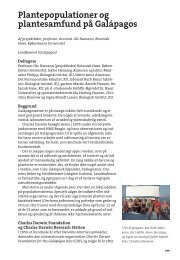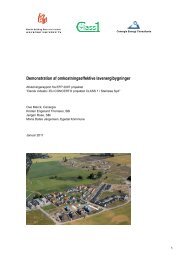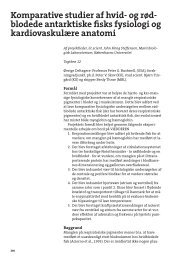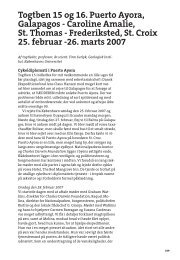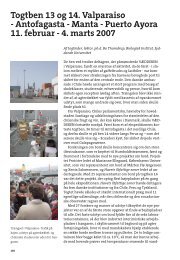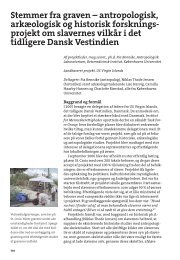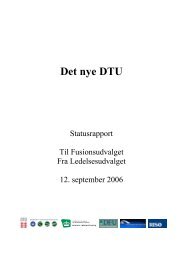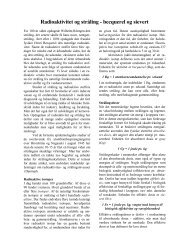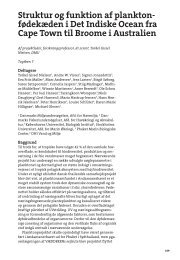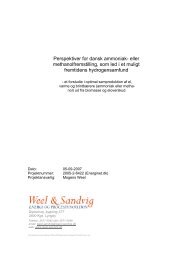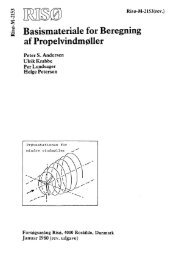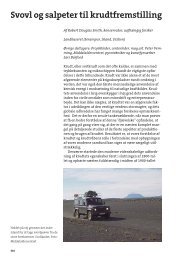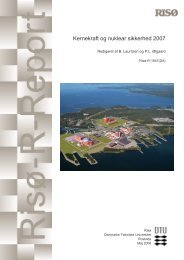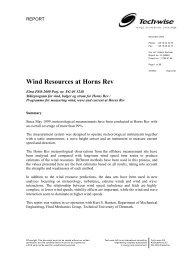Properties of hemp fibre polymer composites -An optimisation of ...
Properties of hemp fibre polymer composites -An optimisation of ...
Properties of hemp fibre polymer composites -An optimisation of ...
You also want an ePaper? Increase the reach of your titles
YUMPU automatically turns print PDFs into web optimized ePapers that Google loves.
8.2 Effect <strong>of</strong> pre-treatment <strong>of</strong> <strong>hemp</strong><br />
Steam explosion used for pre-treatment <strong>of</strong> <strong>hemp</strong> <strong>fibre</strong>s resulted in single <strong>fibre</strong> strength<br />
reduced with 30% and lower standard deviation. That indicates that mainly the strong<br />
single <strong>fibre</strong>s are weakened or degraded so the fraction <strong>of</strong> weak <strong>fibre</strong>s increases (Madsen<br />
et al., 2003).<br />
The effect <strong>of</strong> temperature during the treatment was only significant when defibration<br />
with pectin degrading enzymes was used for defibration before the steam explosion<br />
experiments. Thereby it was not critical if the treatment was performed at 185°C or<br />
200°C, presumably due to low cellulose degradation at this temperature level. This<br />
combination <strong>of</strong> defibration procedures resulted in reduced variation on the single <strong>fibre</strong><br />
strength (950±230 MPa; Figure 29) and more cellulose rich <strong>fibre</strong>s (78%; Figure 26).<br />
Enzyme treatment <strong>of</strong> <strong>hemp</strong> <strong>fibre</strong>s resulted in increased standard deviation <strong>of</strong> the single<br />
<strong>fibre</strong> strength but with no significant reduction in strength (1150±550 MPa). The larger<br />
standard deviation will presumably have a negative effect on the effective <strong>fibre</strong> strength<br />
in <strong>composites</strong> due to the bundle effect explained with the Weibull distribution.<br />
Defibration <strong>of</strong> <strong>hemp</strong> by cultivation <strong>of</strong> P. radiata Cel 26 resulted in decrease in <strong>fibre</strong><br />
bundle strength from 960 MPa to 850 MPa (Figure 30) due to extraction <strong>of</strong> most <strong>of</strong> the<br />
non-cellulosic binding materials (Figure 26b).<br />
Single <strong>fibre</strong> strength [MPa]<br />
2000<br />
1500<br />
1000<br />
500<br />
0<br />
Raw <strong>hemp</strong> Mild STEX Hard STEX Enzyme E-mild STEX E-hard STEX<br />
Only steam explosion Enzyme tr. followed by steam explosion<br />
Figure 29. Single <strong>fibre</strong> strength <strong>of</strong> enzyme treated and steam exploded <strong>hemp</strong> <strong>fibre</strong>s (mild<br />
STEX = 2 min at 185°C; hard STEX = 2 min at 200°C (Madsen et al., 2003).<br />
Defibration <strong>of</strong> <strong>hemp</strong> by cultivation <strong>of</strong> C. subvermispora resulted in weaker <strong>fibre</strong>s (780<br />
MPa; Paper IV) presumably due to cellulose decay. The <strong>hemp</strong> yarn had a lower strength<br />
(Madsen, 2004) but with lower standard deviation. Barley straw had roughly the half<br />
strength (280 MPa) <strong>of</strong> <strong>hemp</strong> <strong>fibre</strong>s presumably due to the lower cellulose content (45%)<br />
and the different <strong>fibre</strong> structure (Table 2; Liu et al., 2005).<br />
Risø-PhD-11 47



